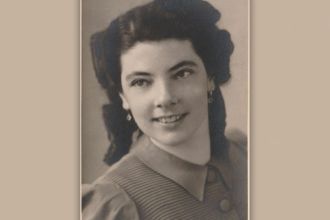
NWO grant for research at the Maritime Museum
The maritime world has traditionally been known as a typical man's world. Men in particular wrote history, literally and figuratively. But there were also women. What was their role? Who were they, and what was their importance for shipping? Senior curator Irene Jacobs received an NWO grant to find out.
With the exhibition on maritime women in 2025-2026 on her radar, curator Irene Jacobs started researching these women, in literature and her own collection. What she found surprised her. ‘There was very little to find. For example, we have portraits of captains' wives and letters or other documents in the collection that mention women, but the identity and role of these women is unknown. Scientific research into maritime women is also very limited. What we know is scant and very fragmented.’
Women in maritime history are vastly underrepresented
Underexposed role
It is often assumed that women ‘therefore’ played hardly any role in the maritime world. But that is completely wrong, Jacobs suspects. ‘Women were not allowed to sail, but that does not mean that they did not. Or that they did not own ships, shipyards, or were responsible for trade or logistics. For example, we know that Anna van Gelder, Michiel de Ruyter’s wife, was responsible for the provisioning of all his ships – an enormous operation of great importance. But almost nothing has been written about her and other captains’ wives at that time. The more I started looking, the clearer it became to me how underexposed women are in maritime history.
When women appear in archives or museum collections, they are often regarded as an exception or even overlooked. The assumptions that exist are not based on knowledge. Moreover, women have been underexposed in many more places in history.’
Social significance
High time to supplement history with new scientific knowledge, Jacobs believes. Moreover, this is urgently needed for the exhibition: there was simply not enough knowledge to create an interesting, in-depth exhibition about maritime women. She wrote a research proposal to investigate the presence, work, role and importance of maritime women who were active in the Netherlands between 1600 and the present. This was approved by the NWO, which awarded her an NWO museum grant.
Special: it is rare for a curator at the Maritime Museum to be exempted from fundamental research. ‘Social interest played a role in the award,’ says Jacobs. ‘The research will reveal a lot about the assumptions we have about – in this case – gender. Think, for example, of a woman like Kenau Simonsdochter Hasselaer. We only know the name ‘kenau’ as ‘a woman with her on her teeth’. But hardly anyone knows that she was a shipbuilder and timber merchant. I expect that it will become apparent that the presence and importance of women in the maritime world is much greater than has been assumed up to now. I think it is great that an exhibition can help to adjust the prevailing image. We often do not realise that we have such assumptions, not only in terms of gender, but also, for example, in terms of origin, colour or age.'
Women were not allowed to sail, but that doesn't mean they didn't do it.
Collection as a starting point
The collection forms the basis of the research. ‘I will search through it in stages. I will conduct further archive and literature research into the women I encounter. Of course, we have an enormously rich source with over 1.2 million objects from the maritime past, but you could also say that it is limited. Because in the past, the male gaze was leading in the collection policy and the way in which the objects were described. Maritime women appear in the collection, but not to a degree that is representative of how things really were. Objects have also not been described from the perspective of the role of the maritime woman in history.
Look at the portraits mentioned earlier: it is about ‘the wife of’, but who that woman was has not been researched or described. The fact that we are now going to do that fits in well with our collection policy. It states that we are going to pay more attention to the maritime woman in both the acquisition and the description of objects.’
Scientific publications
Various scientific and public publications will be published about the research into maritime women. Jacobs also maintains contact with fellow scientists who are conducting similar research at Museum Boijmans Van Beuningen, Het Scheepvaartmuseum, the University of Amsterdam and Lloyds Register. Jacobs: ‘We discuss results and exchange knowledge. Several students are also involved in the research.’
Back to what it all started with: more knowledge to create a beautiful, in-depth exhibition about maritime women. Jacobs: ‘That will happen, but it will also yield a lot for the museum itself. The collection will be better described, and a database will be created with maritime women from the past. This will be linked to the museum database and probably also to the future Network of Maritime Sources. This will allow other researchers to build further on our knowledge. The collection policy will also be adjusted based on the new knowledge: what is missing from our collection about women in certain subjects? This will allow us to collect more sharply in order to be able to tell the story from different perspectives. Because ultimately we want everyone to be able to identify with our stories about the maritime world.’
